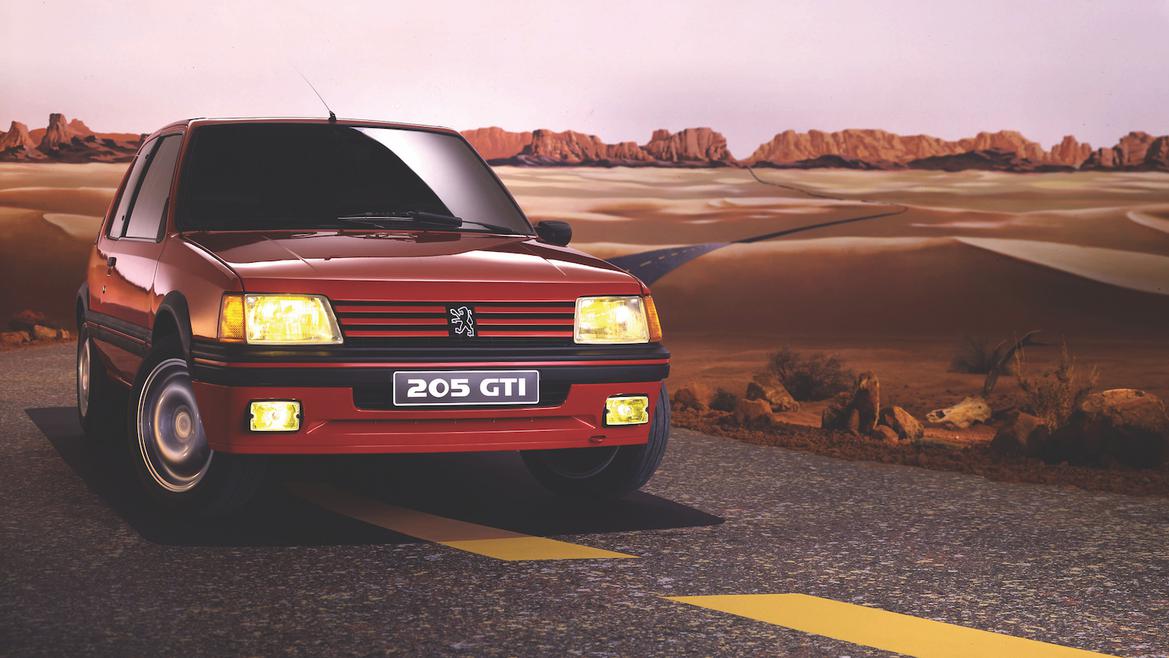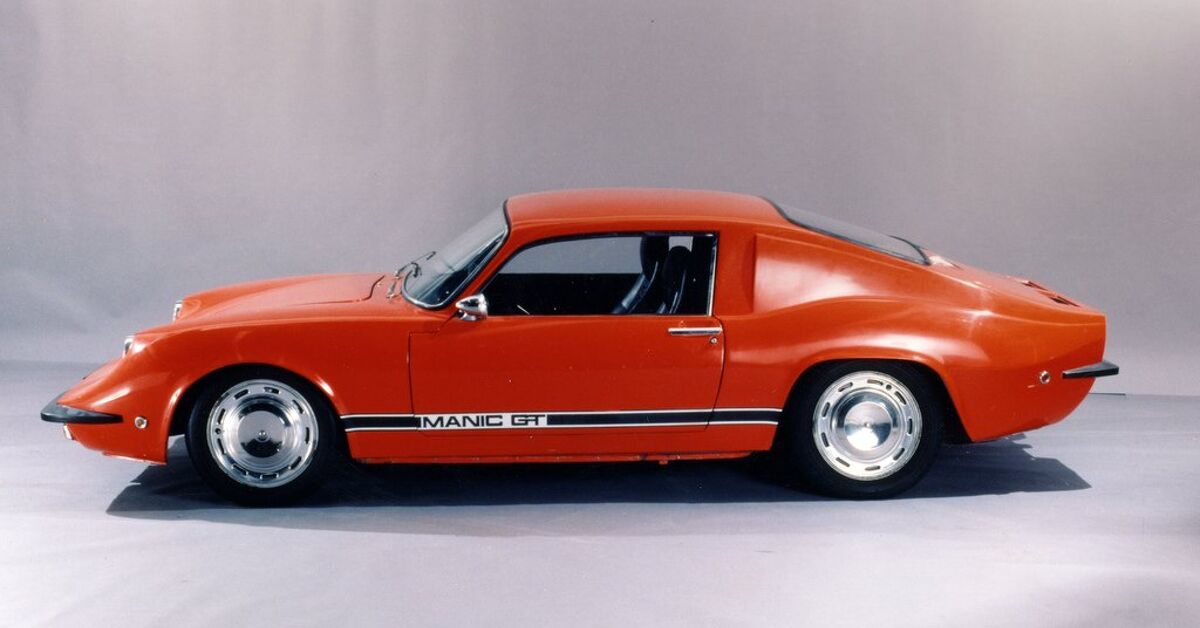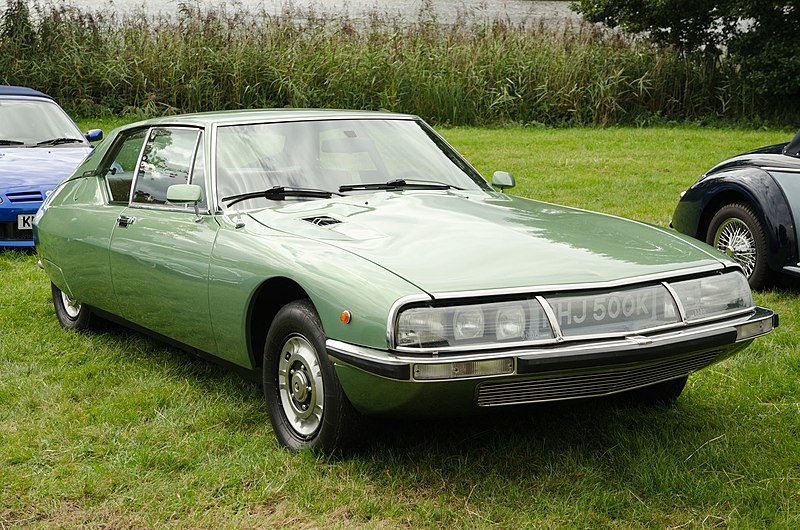I will just add this YouTube channel here
Lots of vids from French Historic Ralleys. More Citroens, Renaults, Peugeots and Simcas than you have ever seen in one place. It is enough to make me have a saved CL search for a Renault Encore.


[Editor's Note: This article originally appeared in the July 2014 issue of Classic Motorsports.]
Most American enthusiasts see French cars as exotics. As we crane our necks for an extra glimpse, we harbor a secret jealousy of any person who has the freedom and the finances to spend time with one.
The wayward awe surrounding French cars grows from a mystique built on absence. Most American cities have a British car club or two, and American classics easily fill parking lots on a near-weekly basis. Congregations of the French, however, are few and far between. Unless we’re attending a concours event where coachbuilt pre-WWII creations rival a beach house in price, we don’t see cars from those parts very often.
This is unfortunate, because the French have spent decades introducing some of the most interesting vehicles into the middle class. R5 Turbos, Dyna Zs, Bagheeras, Caravelles, Gordinis and other stimulating wheels have been flowing through Europe like the Seine. But since these have only trickled across the Atlantic, there are not enough classic French cars around most U.S. scenes to fill even one heat at the Mitty.
Don’t let this rarity be intimidating. There is a French car out there today for everyone.
A good example of why these cars are a rarity in the U.S. is the tumultuous timeline of France’s longest-surviving manufacturer, Renault. Import sales began to take hold in the 1950s. When foreign cars finally cracked 10 percent of the market in 1959, Renault was in an ideal position. They were the largest French auto importer, hitting more than 90,000 cars in that banner year.
The 1960s would be less kind.
Much of Renault’s success was due to the Dauphine. It offered four doors and more space than a Volkswagen Beetle for only about a $100 premium.

But Renault was not ready for the U.S. Owners soon found out that the little sedan was tough enough to earn class victories in rallies like the Mille Miglia, but it couldn’t survive one Northeastern winter without rusting. Plus, while Volkswagen demanded dealers keep a stockpile of new parts on hand, Renault service centers occasionally needed weeks for components to ship from France.
During the ’60s, VW sales shot up by almost 450 percent. At the same time, Renault quickly slipped to less than a quarter of its former sales peak. By 1967, Renault had taken out full-page ads apologizing for their build quality. They even admitted in their own paid spaces, “When we first sent our cars to this country we ran into a sad situation.”
Redemption would be a tough road. The Japanese were already mounting a successful sales assault on the U.S. as Renault began to refocus efforts over here. During the ’70s, they exported the Renault 5, a European bestseller, but gave it the unfortunate Le Car nameplate. And despite its grand-touring-on-a-budget attitude, the Fuego failed to capture the sports car market of the ’80s. Renault couldn’t rekindle its early flame of the ’50s and pulled out of the U.S. in 1986.
This may sound like a sob story about bad cars, but Renault left a distinct footprint of sports car value. The Caravelle, a Dauphine offshoot, was a budget convertible with a detachable hardtop–a feature usually reserved for cars at a more Mercedes-like price point. The R10, sold here during the second half of the ’60s, was one of the first cars to offer four-wheel disc brakes in this country. The Alliance-based GTA was one of the best-handling cars of the ’80s, but it went down in history as merely Renault’s last gasp.

Finding these good Renaults is not easy, but their value pricing when new means most quality examples won’t break the abnk today. This combination of rarity and affordability failed to make Renault a success in mid-century America, but it now gives them a particular collectability. Of course, it’s not all good news on the classic market. Parts were a concern even when there was a dealer network, so finding components today often means an Internet hunt instead of a trip to Pep Boys.
Renault’s situation was far from unique in the U.S. Chrysler had mediocre success trying to convince Americans they would like a “frisky” Simca. Panhard had an amazing style and an engineering talent that survives today, but we ignored their business to death in the ’50s.
Time after time it seemed like the new French kid on the block had the potential for popularity, but he always ended up eating his lunch alone. The mainstream continuously eluded French carmakers in the U.S., and possibly one of the most unusual was Citroën.
In true French style, Citroën had a brief but torrid affair with the U.S. that lasted about two decades. But even after the pullout in the 1970s, handfuls of cars slipped past our borders because they were too striking to resist. These included everything from the workman’s 2CV to the exclusive DS line of sedans that looked futuristic throughout their production. In between there were exotics like an experimental rotary-powered GS Comotor and the Citroën-Maserati mash-up known as the SM.

More than any other French car company, Citroën left a diverse crowd of machines in their wake. They offered features such as hydro-pneumatic suspensions, aerodynamic metalwork, designer colors, and an obsession with front-wheel drive that dates back to before WWII. Citroën is the iconic eccentric French car company, and its methods attracted everyone from designers to engineers. This “harmony of these opposites” (exactly how Citroën described their own cars in the U.S.) has helped create a hospitable atmosphere for all car enthusiasts.
Kim Walter and Robert Monteleone are the current organizers of an event known as the Citroën Rendezvous. For nearly four decades, this summer gathering has treated French cars like family. It attracts people from across the country to upstate New York: Citroën owners, car enthusiasts, and anyone else who just wants to spend a weekend with a few nice people. Even though “Citroën” appears in this gathering’s name, Walter won’t refuse entrance to any marque: “We welcome everyone–just make it interesting.”
Walter points out that Citroën gatherings over there are very specific. There is no room for an upmarket DS sedan at a 2CV meet, and the SM is a bit too Maserati to mix with either of them. In the U.S., though, the pool of cars is much smaller. A 150-car event like the Rendezvous is bound not by one model, but by a passion for the products from an entire country.

Walter knows this idea quite well. His personal fleet includes a basic 2CV and a slightly more comfortable Ami 8. “My heart is with the two-cylinder cars,” explains Walter. That helps to justify why he also jumped a few federal hoops to import a Citroën Visa hatchback–one of the few in the U.S. Walter’s sole deviation from the Under-700cc Club is a 1959 Citroën DS. He purchased it to have one vehicle that’s the same age he is.
Finding parts for all these cars is a bit of a mixed bag. Although the DS was built for 20 years, an early example like Walter’s has some unique bits: Citroën was still changing the formula of its ultramodern sedan after its debut.
Still, the basics are much easier to locate than it would seem for cars from a company that has been absent since 1978. The long production runs and international sales of cars like the 2CV and the DS have created a worldwide parts stream that even trickles into the U.S. There are North American specialists that stock nearly everything to keep the popular Citroëns on the road, and because the oddities like Walter’s Ami 8 and Visa share mechanical bits with the more common Citroëns, spares may only be a few days away.
If Citroën built the eccentric French stereotype in the U.S., its current parent company, Peugeot, did all it could not to fall into the same trap. Over here, Peugeot used their diesel’s tough-as-nails reputation and distinct European styling to engage the more conservative Volvo crowd through the ’70s and ’80s. They wanted to play in a higher class here than they did at home. Unfortunately, that desire shut the door on the best French budget sports car, the 205 GTI.

Peugeot responded to Volkswagen’s GTI in 1984 by stuffing a fuel-injected, 1.6-liter engine–and later an optional 1.9–into the attractively styled 205 hatchback. These new engines amplified the sticky suspension and sharp handling of the entry-level car. This chemistry had Peugeot’s GTI speedily clawing its way to the top of hot-hatch shopping lists all over Europe.
Despite its success at home, the car never came to America because a number of things could have gone wrong. Exchange rates could have made pricing volatile. The entry-level size could have downgraded Peugeot’s image to more pedestrian levels. Plus, our market’s aversion to hatchbacks would have made the 205 GTI a tough sell.
In the end, Europe celebrated the GTI while its absence here just made American enthusiasts grow fonder. But our loss decades ago might just have created an interesting opportunity for those who want something rare, fast and budget-friendly today.
“The 205 GTI outsold the other hot hatches of that time due to its loud styling, light weight and superb handling,” says Matthew Jobling of the U.K.-based specialist company Pug1off. While the engine was adequate in its day, Jobling sees it falling short in the modern era. “The 1.6 will make the quoted 115 horsepower, but a 1.9-liter will be lucky to make the advertised 123 horsepower on a dyno, which leads us to believe that was always somewhat of a lie.”
This weakness has given Pug1off an interesting new market: GTI restorations and upgrades. For a price, the company will install the 2.0-liter, 167-horsepower engine from the larger and younger Peugeot 306 GTI. Spend a little more for their Stage 2 upgrade, and the power is now a respectable 195 horses. This package may seem like some speed-shop upgrades for the “Fast and Furious” crowd, but in reality, Pug1off makes only subtle changes when necessary and offers a 12-month/10,000-mile warranty on U.K. work.

Jobling admits that starting with a donor car and adding a full restoration–including stronger brakes, upgraded suspension and a six-speed manual transmission–is much more costly. It's not cheap, especially for a car that couldn’t even make it over here 30 years ago when it was new. But that is exactly what makes this situation unique.
All 205 GTIs that were built from 1984 to ’89 are now eligible to be imported under the NHTSA’s policy: Cars that are 25 years or older are exempt from regulations. Orchestrating the kind of foreign transactions and shipping needed to put a Pug1off GTI in your driveway will certainly add a few thousand dollars to the budget. Still, at the end of the day, this little hot hatch will be the most original car in the neighborhood, and it will have a better power-to-weight ratio than a Porsche Boxster.
If a Pug1off GTI is too expensive or seems a little tricky to get across international borders, there are plenty of domestic options to fit every budget. In fact, one car can cut many different paths in today’s market.
Just because French cars are rare here doesn’t mean they are all expensive. The Citroën SM is one of the most eccentric grand touring cars ever made, but that’s hardly reflected in the price for well-maintained examples. Trench coat fans can re-create Columbo’s infamous Peugeot 403 convertible for not too much, either.
It’s not just about the quirky ones. A good example of a Renault Alpine A310 can be had for less than a new Audi A5. These quick and nimble machines look like they fit somewhere between your neighbor’s Camaro and Mad Max’s Interceptor. Best of all, the mass-produced PRV V6 was used in everything from Volvos to DeLoreans, which means replacing major components won’t take an epic search.
The international nature of today’s car market means that the French aren’t completely absent from these shores. Renault’s relationship with Nissan brings shared technology to our roads, and the outgoing MINI has an engine built by Peugeot-Citroën. The problem is that keeping the French bits beneath the surface robs us of a unique experience.
France has an automotive flair that is distinct without losing its European finesse. Like the Germans, French cars are free of interior excess, but the atmosphere is less intense. Like the Italians, they offer a feeling for the road, but the ride isn’t as harsh. The French like to take a corner in comfort and arrive in style.
These pages may read like a sugarcoated love letter to French cars. We have the luxury of looking past their troubles, like the horrendous reliability that makes the AMC-built Renault Alliance/Encore a white elephant, or the identity crisis that prevented the Peugeot 505 from getting a foothold in our market. We don’t have to be concerned with those issues because those were new-car kinds of problems. In the classic car world, personality breeds desirability, and anyone on these shores who has turned a wrench on a French car knows they have beaucoups of it.
I will just add this YouTube channel here
Lots of vids from French Historic Ralleys. More Citroens, Renaults, Peugeots and Simcas than you have ever seen in one place. It is enough to make me have a saved CL search for a Renault Encore.
What about the lowly Simcas? I'll admit to owning a 69 1204 Wagon. Quirky. Maybe had some reliability issues. But 63hp out of 72ci. Direct lineage to the Omni/Horizon that helped save Chrysler.
"Why not add an underrated French classic to your stable?"
I may be French-Canadian but I'm not insane...
Up here in Canada, we got a lot more French cars than the US ever did. When I went racing in the US, everyone pronounced Renault as Reenolt instead of Runo - they just had no exposure to the cars.
Many French cars are idiosyncratically conceived and assembled. The closest I got to buying one was a Facel Vega HK500 which like my Jensens, used a Chrysler big block engine, but I came to my senses in time. The restoration almost drove the guy that did buy it crazy as there were many oddball things done by the manufacturer.
We even had a brand manufactured here in Canada, the Manic GT which was assembled in Quebec using Renault mechanicals:

I did lust after a Matra Murena just because of the oddball three abreast seating arrangement but again, came to my senses in time. And I avoided buying the handsome Citroen SM - a French limo with odd electro-hydraulic bits that were pretty much unobtainable even here.

Having said that, one local racer did quite well in class with a R8 Gordini
Back in around 1972, I nearly bought a '66 Caravelle with softtop/hardtop, but upon inspection, the underside was not okay due to rust. The car was only 6 years old, and this was in Vancouver, Canada, not back east in the rust belt. Of course, I have no idea if that was where it was from.
I really like the DS, and there is a local Citroen repair company nearbye. But I just don't know if I want to risk the usual high cost of a decent DS and the cost of keeping one running.
Displaying 1-5 of 5 commentsView all comments on the CMS forums
You'll need to log in to post.